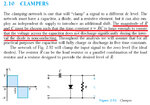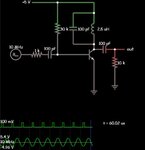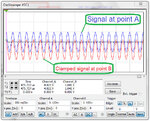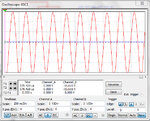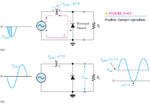samy555
Full Member level 4
Hi
I have read many of the pages on the Web about class C amplifier, and I have benefited and learned a lot, but unfortunately non of these sites spoke about how to choose the values of C1 and R1 (look at the circuit below).
I think that C1 & R1 form a HPF, if the input signal is of 2V peak and 10MHz frequency, I think that if you choose to value of C1 such that it has very low reactance at 10MHz then using the high pass RC filter law to calculate R1 when cutoff freq = 10MHz or lower.
Thanks
I have read many of the pages on the Web about class C amplifier, and I have benefited and learned a lot, but unfortunately non of these sites spoke about how to choose the values of C1 and R1 (look at the circuit below).
I think that C1 & R1 form a HPF, if the input signal is of 2V peak and 10MHz frequency, I think that if you choose to value of C1 such that it has very low reactance at 10MHz then using the high pass RC filter law to calculate R1 when cutoff freq = 10MHz or lower.
Thanks
Last edited by a moderator:

